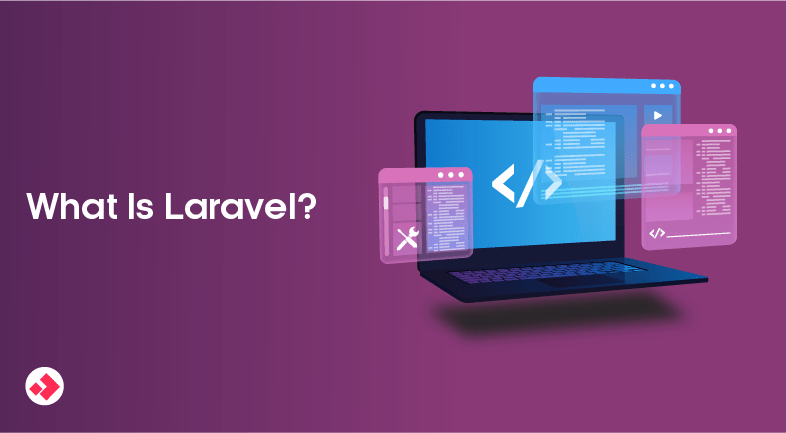Table of Contents In Laravel, many-to-many relationships are established using an intermediate table that holds foreign keys from the related
Unlocking the Power of Has One Through Relationship in Laravel Real-World Examples and Best Practices for Faster Querying
- Muhammad Waqas
- May 15, 2023
- 5:03 am
- No Comments
Table of Contents

Laravel is a widely used PHP web framework that provides developers with a rich set of tools and features for building robust web applications. One of the key features of Laravel is its powerful ORM (Object-Relational Mapping) tool, which makes it easy to work with databases and relationships between database tables. In this blog post, we will be discussing one of the most useful relationship types in Laravel — the “Has One Through” relationship.
What is a Has One Through Relationship?
The “Has One Through” relationship allows us to define a relationship between two models that are not directly related to each other. This relationship type is used when we have two related models, and we need to access information from a third model that is related to both of these models. The “Has One Through” relationship can be thought of as a bridge between two related models, which allows us to access data from a third model that is indirectly related to them.
Example 1: User and Profile Relationship
Let’s consider the scenario where we have a User model, a Profile model, and a Country model. Each user has one profile, and each profile belongs to a country. We can use the “Has One Through” relationship to access the country associated with a user’s profile. Here’s how we can define this relationship:
class User extends Model
{
public function profile()
{
return $this->hasOne(Profile::class);
}
public function country()
{
return $this->hasOneThrough(Country::class, Profile::class);
}
}
This will load all users with their associated profiles and countries.
Example 2: Company and Customer Relationship
Let’s consider another scenario where we have a Company model, a Customer model, and a Product model. Each company has many products, and each customer can purchase many products. We can use the “Has One Through” relationship to access the products purchased by a customer through their associated company. Here’s how we can define this relationship:
class Company extends Model
{
public function products()
{
return $this->hasMany(Product::class);
}
}
class Customer extends Model
{
public function company()
{
return $this->belongsTo(Company::class);
}
public function purchasedProducts()
{
return $this->hasOneThrough(Product::class, Company::class);
}
}
In the example above, we define the “products” relationship on the Company model using the “hasMany” method, which means that each company has many products. We then define the “company” relationship on the Customer model using the “belongsTo” method, which means that each customer belongs to a company. Finally, we define the “purchasedProducts” relationship on the Customer model using the “hasOneThrough” method, which allows us to access the products purchased by a customer through their associated company.
To eager load the “purchasedProducts” relationship, we can use the “with” method like this:
$customers = Customer::with('purchasedProducts')->get();
This will load all customers with their associated purchased products.
Example 3: Student and Classroom Relationship
Let’s consider another scenario where we have a Student model, a Classroom model, and a Teacher model. Each student belongs to a classroom, and each classroom has one teacher. We can use the “Has One Through” relationship to access the teacher associated with a student’s classroom. Here’s how we can define this relationship:
class Student extends Model
{
public function classroom()
{
return $this->belongsTo(Classroom::class);
}
public function teacher()
{
return $this->hasOneThrough(Teacher::class, Classroom::class);
}
}
class Classroom extends Model
{
public function teacher()
{
return $this->belongsTo(Teacher::class);
}
public function students()
{
return $this->hasMany(Student::class);
}
}
In the example above, we define the “classroom” relationship on the Student model using the “belongsTo” method, which means that each student belongs to a classroom. We then define the “teacher” relationship on the Student model using the “hasOneThrough” method, which allows us to access the teacher associated with a student’s classroom.
To eager load the “teacher” relationship, we can use the “with” method like this:
$students = Student::with('teacher')->get();
This will load all students with their associated teachers.
Code, Explanation, and Usage:
Now that we have seen some real-life examples of the “Has One Through” relationship, let’s take a closer look at the code, explanation, and usage of this relationship type in Laravel.
The “Has One Through” relationship is defined using the “hasOneThrough” method, which takes two arguments: the target model and the intermediate model. The target model is the model that we want to access through the intermediate model, and the intermediate model is the model that bridges the relationship between the two models.
Here’s the syntax for defining a “Has One Through” relationship in Laravel:
public function relationshipName()
{
return $this->hasOneThrough(TargetModel::class, IntermediateModel::class);
}
In the example above, we define a “Has One Through” relationship called “relationshipName” that allows us to access the target model “TargetModel” through the intermediate model “IntermediateModel”.
To eager load the “Has One Through” relationship, we can use the “with” method like this:
$models = Model::with('relationshipName')->get();
This will load all models with their associated “Has One Through” relationships.
Conclusion:
The “Has One Through” relationship is a powerful feature of Laravel that allows us to access data from a third model that is indirectly related to two other models. This relationship type is useful in real-life scenarios where we have complex relationships between database tables. By using eager loading, we can optimize our queries and improve the performance of our web applications.
Popular Post
Table of Contents Introduction: Laravel is a PHP framework that has become quite popular in recent years. One of the
Table of Contents In Laravel, models are the backbone of the application. They act as a bridge between the database
Table of Contents Laravel is a popular PHP framework that is widely used for web application development. One of the

An experienced Code Debugger with a strong track record of identifying and resolving complex software issues. I aim to contribute my analytical skills and expertise in debugging tools to ensure efficient and reliable software operations and deliver high-quality software products that meet customer requirements.
If you found this content valuable, please show your support by following me on Medium, LinkedIn, Twitter and GitHub. Your support will motivate me to create more informative content in the future. Don’t forget to give a clap or share this blog with others if you found it helpful!
